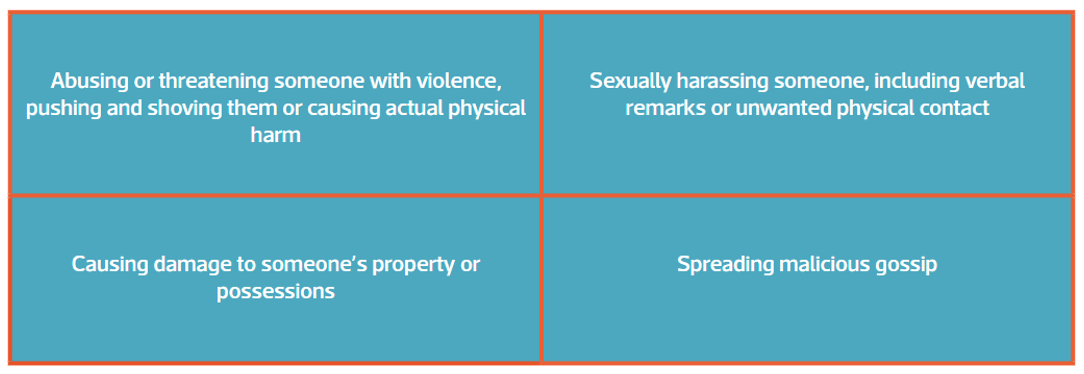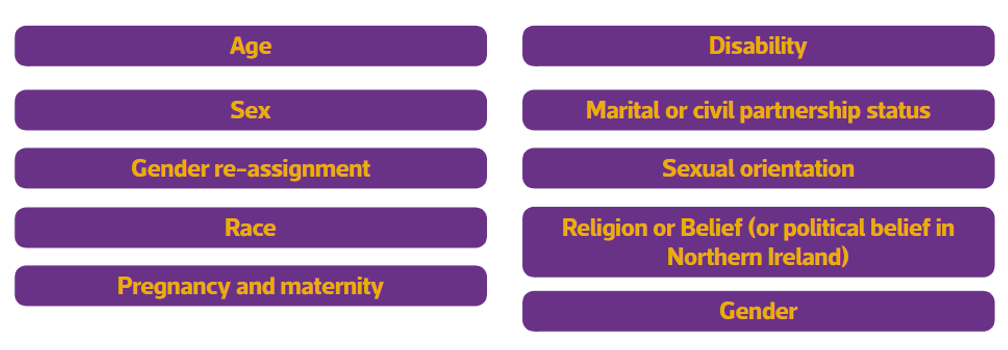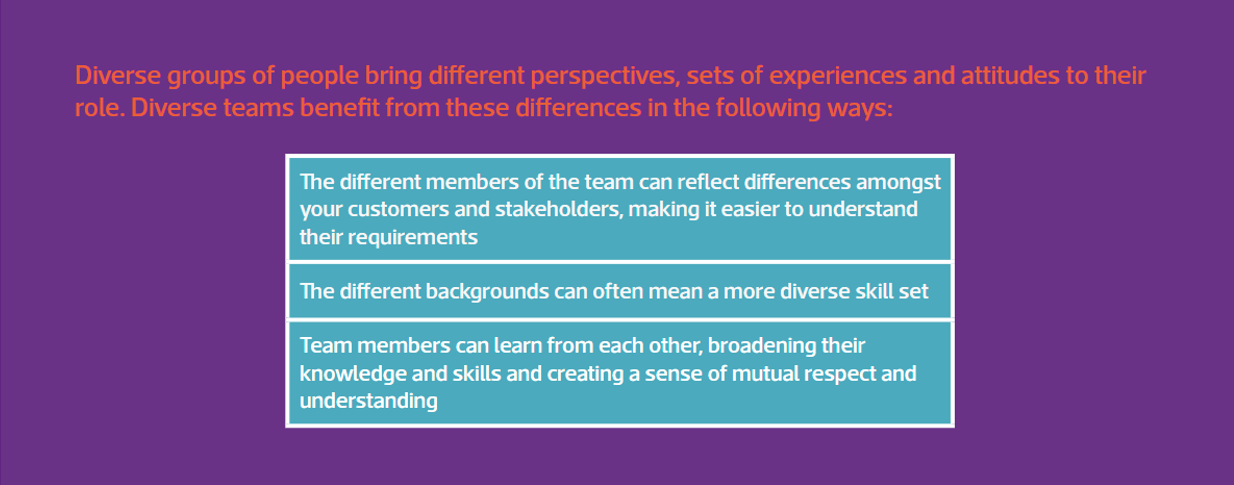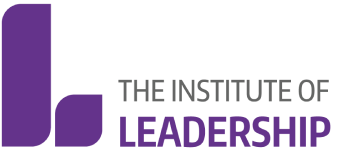There has long been a legal and ethical focus on equality, diversity and inclusion, but now organisations have recognised that having a diverse workforce is also important to their success.
What is Discrimination?

According to the Equality Act ( 2010) Discrimination means treating someone unfairly because they possess a particular ‘protected characteristic’:

Unfairly means that any of these personal characteristics (rather than the individual’s ability to do their job or other objective criteria) has influenced a decision affecting them.Discrimination by team members often takes the form of harassment.
Harassment means using unwanted or unwelcome words or actions that knowingly cause distress, such as:
- If someone asks for the person to stop doing or saying something but they continue.
- If someone does something they should know would be unwelcome, including making remarks in relation to protected characteristics, appearance or socio-economic status.

Unconscious Bias
‘Unconscious bias’ is the term used to describe having prejudices and unsubstantiated opinions which you have not thought through, or even thought about, for a long time, if ever. It means that your opinion on and reactions to whatever the biases are about will be automatic. But the terms ‘bias’ and ‘prejudice’ also mean that this unconscious belief is not fair, is irrational, or simply inaccurate in some way.
This is dangerous. Inclusive leaders make efforts to uncover and counteract unconscious bias. They consistently try to start conversations with and listen to, a diverse range of individuals. This gives them an insight into possibilities and realities of which they had not been aware of before. They ask for feedback about themselves from others, and they regularly question their own values, and their conclusions and beliefs about people, issues and priorities.
Social Sensitivity
Social sensitivity goes beyond discrimination. A study of teams in Google in 2016 revealed that the most effective teams were the ones where the team members felt safe to be themselves. This psychological safety is ‘‘a sense of confidence that the team will not embarrass, reject or punish someone for speaking up,’’ where there is “interpersonal trust and mutual respect in which people are comfortable being themselves.’’ (Edmonson,1999 ) A team where members are nice and kind to each other will be a more effective team and a better place to work, and the team leader, should role model that behaviour with their colleagues.
Another area in which you can guide your team is to ensure that they put the person before the label, known as
‘People First Language’ where that is appropriate. An example of this is referring to an employee who is on
maternity leave, rather than a maternity leave employee. A further example would be to avoid saying “wheelchair
bound” but rather a “person who uses a wheelchair”. However, it should also be borne in mind that in other
situations ‘Identity First Language’ is sometimes more appropriate. For example, many people who have been
diagnosed with a Autism Spectrum Condition prefer “Autistic Person” rather than “Person with Autism”. In such
cases, as with pronouns relating to gender (he/she/they), it should be considered best practice to seek the
preference of the person rather than making assumptions, to promote inclusivity.
The Benefits of Diversity and Inclusion
Diversity means having people within your team who broadly reflect the population. Inclusion means taking active steps to attract, develop and promote people from diverse backgrounds. Groups of people who are all the same, tend to think and act alike. The differences between diverse members result in the generation of more creative ideas, encouraging innovation in what you do and how it’s done - an essential characteristic of ongoing improvement.

References
Duhigg, C. (2016). What Google Learned From Its Quest To Build The Perfect Team The New York Times MagazineEdmondson, A. (1999). Psychological safety and learning behavior in work teams. Administrative Science Quarterly Kirton, G., and Green, A. (2011). The Dynamics of Managing Diversity, Oxford: Routledge Myers, V. ( 2014 ) How to Overcome Our Biases? Walk Boldly Toward Them TED (December) Available at: https://www.ted.com/talks/verna_myers_how_to_overcome_our_biases_walk_boldly_toward_them/transcript?language=en
Autistic Hoya (2011). The Significance of Semantics: Person-First Language: Why It Matters. Available at:
https://www.autistichoya.com/2011/08/significance-of-semantics-person-first.html
How do you appreciate diversity? Test yourself with our Scorecard.
If you’re a member, you can test yourself on Appreciating Diversity and see if you meet the standard.
Spotlights
Further Resources
From the Blog










